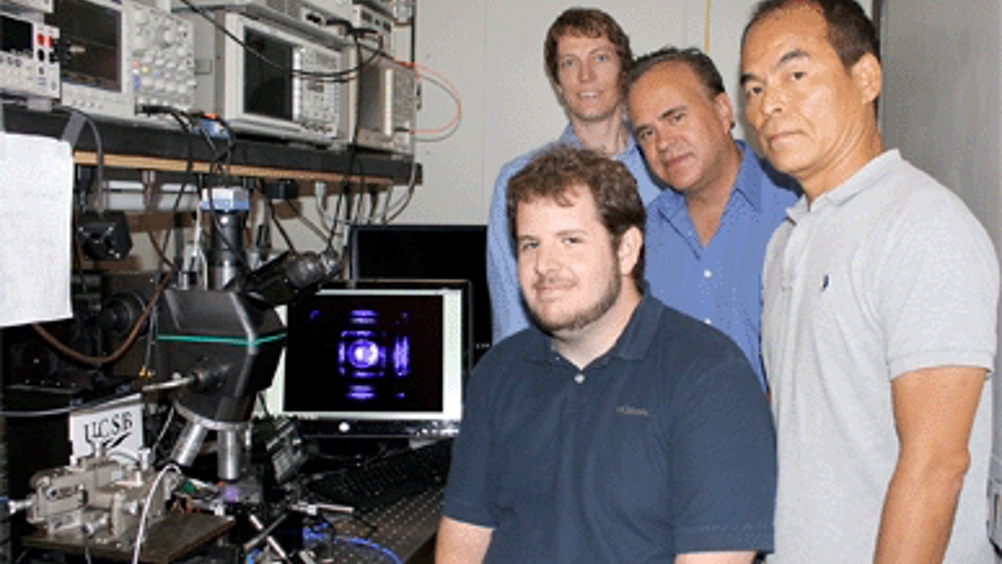Researchers develop violet non-polar m-plane VCSELs
A team at the University of California, Santa Barbara (UCSB) says it has developed the first violet non-polar vertical-cavity surface-emitting lasers (VCSELs) based on m-plane gallium nitride semiconductors.

This recent discovery by Shuji Nakamura and his research team at UCSB is claimed to be an achievement in VCSEL technology that opens doors for higher-optical-efficiency lasers at greatly reduced manufacturing costs for a variety of applications.
‘We have demonstrated working, electrically injected non-polar m-plane nitride VCSELs lasing at room temperature and have shown that such devices are naturally polarisation locked along the crystallographic a-direction of the wurtzite crystal,’ said Dr Daniel Feezell, project scientist with Nakamura’s lab. ‘This is in contrast to the majority of VCSELs, which are typically randomly polarised.’
Feezell directed the research effort with Nakamura and Steven DenBaars, co-directors of the Solid State Lighting and Energy Center at UCSB, and graduate student Casey Holder. Their findings have been submitted for publication.
‘This is the first report of a non-polar VCSEL, which we believe to be one of the biggest breakthroughs in the field of laser-diode technology,’ said Nakamura, a professor of materials at UCSB. ‘The non-polar VCSEL has a lot of advantages in comparison with conventional c-plane devices. One major advantage is that the light polarisation is locked to one direction. This device could be used for a variety of applications, such as lighting, displays, sensors and technology that requires energy efficiency and small form factor.’
Register now to continue reading
Thanks for visiting The Engineer. You’ve now reached your monthly limit of news stories. Register for free to unlock unlimited access to all of our news coverage, as well as premium content including opinion, in-depth features and special reports.
Benefits of registering
-
In-depth insights and coverage of key emerging trends
-
Unrestricted access to special reports throughout the year
-
Daily technology news delivered straight to your inbox










Water Sector Talent Exodus Could Cripple The Sector
Well let´s do a little experiment. My last (10.4.25) half-yearly water/waste water bill from Severn Trent was £98.29. How much does not-for-profit Dŵr...